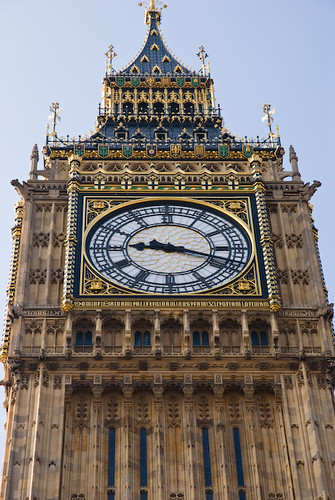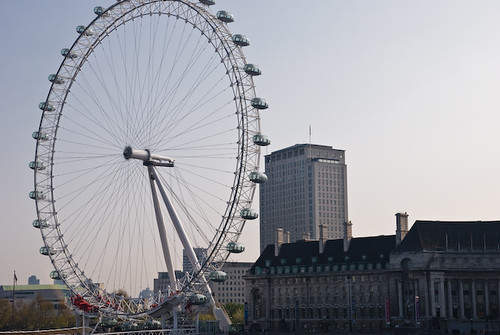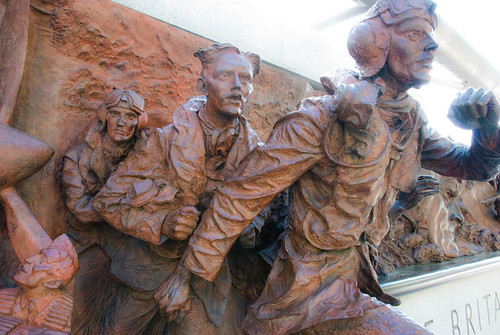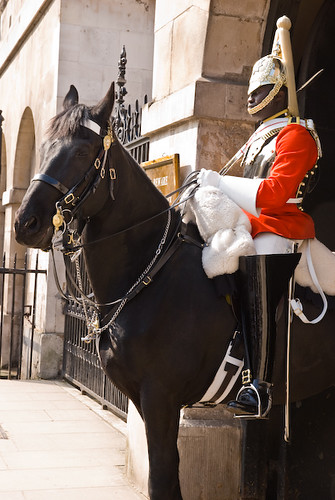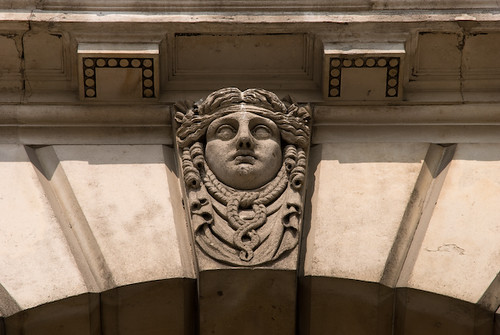Posts Tagged: Culture
Monday in London
I finally got a chance to work through a batch of photos from the London trip and posted them on flickr last night. My walking tour began on Monday. We had been here many years ago, but I did not get a real sense of the layout of the city center. It seemed pretty big and confusing, and hard to grasp. We took the Underground pretty much everywhere, and got good at looking at the tube map and figuring out how to get from hotel to museum, etc. But this means that you start at a point and then disappear underground, and then pop up at another point. So, one does not get a real sense of the connective tissue between. This time was different. I took the tube to get a bit closer in, but then just walked the streets from point to point. This helped to make it clear where things are in relation to each other and made the city intelligible to me as a visitor. I’m not claiming I’ll remember any of this by the next time I get to visit, but that is another story entirely.
As I mentioned in the last post, I took the District Line tube to Westminster and came out of the station right in front of Big Ben.
This was a wonderful site with which to start a day in London. The sky was clear and the gold glinted in the sun. I walked around the corner onto Victoria Embankment to stroll along the Thames for a bit. That’s when I first glimpsed the London Eye, a gigantic ferris wheel 443 ft. high. That’s over 25 stories! It simply dwarfs the large buildings right next to it. Sarah wanted to go for a ride, but I’m not sure how my acrophobia would treat me up in that thing.
Along the way I also saw the Battle of Britain Monument. I thought it was rather an odd monument that was not sure whether it wanted to be a contemporary, abstract work or more of a traditional figurative sculpture.
I walked up Horse Guards Ave, and back down Parliament St, past the Horse Guards Cavalry Museum. Then past Downing St., which is pretty well guarded. It’s a fairly small and short side street, closed off with a large metal fence and gate and many police guards standing around. No surprise, of course.
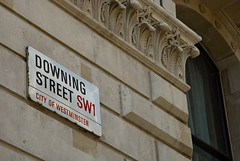 I didn’t see Mr. Brown, however. He and the finance minister were busy working on a deficit budget to bail out the British economy, which became quite a news story while we there. There is quite a bit of opposition to the amount of borrowing the British government is proposing to do to get through the economic hard times. In contrast, the daily protests by Tamils over Sri Lanka were barely covered in the media I saw while there. A couple citizens I spoke to seemed mystified about what the protesters were demanding the government do about the situation in Sri Lanka.
I didn’t see Mr. Brown, however. He and the finance minister were busy working on a deficit budget to bail out the British economy, which became quite a news story while we there. There is quite a bit of opposition to the amount of borrowing the British government is proposing to do to get through the economic hard times. In contrast, the daily protests by Tamils over Sri Lanka were barely covered in the media I saw while there. A couple citizens I spoke to seemed mystified about what the protesters were demanding the government do about the situation in Sri Lanka.
Coming back down the street toward Parliament, I happened upon the aforementioned Sri Lankan Tamil protest. I’m not sure how I missed it the first time around; perhaps they had not started “protesting” yet and I took them for tourists.
At first, I was quite surprised to come upon the scene and found it rather exciting. There was definitely some action as the huge crowd spilled out of the park at one point and blocked Bridge St. The police were trying to hold them , but got pushed back and eventually fell back to protect the House of Commons, etc. Ultimately, it was all pretty civil, and well behaved on this day. After taking about 100 photos at the protest, I headed back up Parliament St toward the National Gallery. This time the Horse Guards were out and I got a couple shots.
Soon I arrived at Trafalgar Square, and got the standard shots of the Nelson’s Column and National Gallery in the background. I immediately recognized Admiralty Arch from my previous visit to London, but only as a landmark I passed through to get to the ICA.
I spent only about two hours in the National Gallery. Since I was traveling on a budget, I didn’t spring for special exhibits, but immensely enjoyed the fabulous permanent collection in the rest of the museum, which is free.
After the NG, I headed up Strand toward St Paul’s Cathedral. Along the way, I passed Somerset House, a large historic complex which I’d not heard of before, but which appeared to include a wonderful art venue and be worth a special effort to visit in the future. More on that and the rest of Monday in the next post, coming soon.
Our moment, our time

Essex St. Our moment,our time, originally uploaded by january20th2009.
I am amazed. Politics has been subject matter for street art for as long as they have both been around, I am sure. But in my experience, the political message of this kind of work is almost always critical of the dominant political party, and when it comes to elected officials, nearly always scathing in its portrayals and parodies. I’ve seen plenty of this for all the presidents I have lived through going back to Nixon. Admittedly most of the criticism has been directed at Republicans. No one, however, was sneaking around putting up triumphal representations of Slick Willy or Jimmy, as far as I remember.
I just don’t remember street artists ever busting out to celebrate the election of an American president like I’m seeing happen for Obama. It is almost disorienting to see newstands and telephone poles plastered with stylized images of Barack bearing slogans of support. I think it is another indication of what an enormous cultural and political earthquake this election has turned out to be.
It’s almost as if one needs to be continually reminded of this fact because it is so hard to really grasp. And the artists are doing it. They are reminding me to be amazed.
Tiny Point in Last Night’s Presidential Debate
OK. This thing is probably done, but I am still curious about something. During the debate last night, McCain was discussing the situation in Iraq, Afghanistan and Pakistan, and, if I heard him correctly, he said, “We forced the Soviets out of Aghanistan by supporting the freedom fighters, but then we left and the Taliban came in…” Please correct me if I am misremembering, but are they not one in the same? Was it not in fact the Taliban that we supported as freedom fighters when we wanted the USSR out of there.
It seems to me this is either a huge blunder or a huge mistruth for a potential president to make, particularly the one who claims to have superior foreign policy experience. If our government cannot remember it’s own policies and strategies, and the very history and origins of the situation we are now facing with the so-called “war on terror”, then how can we possibly find a solution?
Smart Car Monster Truck
All of sudden, like the past month, Smart Cars having been popping up in my neighborhood like mushrooms in a cow pasture. It looks like they could overtake Priuses on the roadways of Berkeley. But behold how awesome this is! It perfectly combines the sensibilities my old home town (Fresno, CA) and my new town (Albany/Berkeley, CA). Leave it to a Greek…
